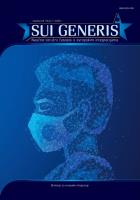Ostvarivanje zaštite od uznemiravanja na radu i u vezi sa radom u pravu Evropske unije
Achieving the protection against harassment at work and in connection with work in the European Union law
Author(s): Radmila DragišićSubject(s): Law, Constitution, Jurisprudence, Human Rights and Humanitarian Law, EU-Legislation, Labour and Social Security Law
Published by: Direkcija za evropske integracije Vijeća ministara Bosne i Hercegovine
Keywords: harassment;discrimination;directives;case law;legal means;procedure;
Summary/Abstract: The Montan Union was dominated primarily by the economic matrix,while the Treaty establishing the European Economic Community from 1957 contains the provision on prohibiting discrimination based on sex in the employment context. The actions of the Court of Justice of the European Communities significantly changed the situation in the course of decades that followed, and the 1990s provided suitable ground to promote the basis for adopting secondary sources of the European Union law on discrimination and protection against harassment at workplace through amending the founding treaties, which expanded the scope of the anti-discrimination law at the level of the European organisation. Those are Directive 2000/78/EC of 27 November 2000 establishing a general framework for equal treatment in employment and occupation (hereinafter: Directive on general framework for equal treatment) and Directive 2000/43/ЕС of 29 June 2000 implementing the principle of equal treatment between persons irrespective of racial or ethnic origin (hereinafter: Directive on the principle of equal treatment). The existence of the legal framework for the protection against harassment at workplace at the level of the Union as an international organisation, undoubtedly confirms that the harassment at workplace is a common and complex form of psychological violence, which due to its social danger requires to be legally regulated in a precise and adequate manner, for more efficient and rapid suppression. Legal regulation, regardless of whether it is carried out on a national or the European Union level, implies the existence of a precise content definition of the phrase “harassment at work and in connection with work,” which requires adequate knowledge and experience to recognise all, even the unnamed forms of harassment. Only when they are recognised is it possible to determine the content, and to foresee and prescribe conditions and measures to prevent and disable them. Given the increased occurrence of harassment at workplace, as well as intensified interest for adequate and comprehensive legal regulation of this type of social relations, we believe that the expert and scientific community would benefit from additionally understanding the provisions of the mentioned secondary sources of law regarding the protection against harassment at work and in connection with work, through the example from the case law of the Court of Justice of the European Union selected by the author, and EU Commission reports about achievements in transposition of the provisions of the mentioned sources in Member States of the European organisation. In addition, this is of particular importance because the transposition of the foreign law represents an obligation arising from the EU accession and association process.
Journal: Sui generis
- Issue Year: 2020
- Issue No: 7
- Page Range: 87-106
- Page Count: 20
- Language: Bosnian, Serbian

